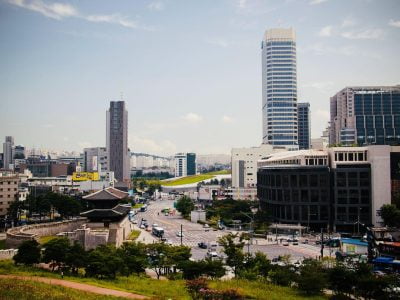Scientists believe that society has progressed beyond the need for golf, emphasizing the unsuitability of the land in this regard. There is a prevalent misperception that playing golf means being in nature, explaining it by the fact that golf courses are nature-themed entertainment parks rather than natural areas.
For example, land that could have been used for cheap housing, a community farm, a public park, an above-ground pool, or a natural habitat has been turned into a gigantic board game that serves as a status symbol rather than a form of entertainment.
Around the world, there are almost 40,000 golf courses. They sit there, taking up 26 times the space per player as a football field while contributing significantly less to the global community.
But, are scientists right?
Golf Courses and Their Origins
The origins of golf courses are intrinsically related to nature: the first ‘bunkers’ were used by shepherds in Scotland. Bunkers were areas in the highlands where sheep could graze and relax because they were out of the wind. As a result, the grass died and the ground got sandier.
The shepherds actually played golf with naturally curved bunkers by striking a stone with a limited number of hits. Who could have predicted that golf will become one of the world’s most popular sports for playing and, furthermore, that people will put money on it on golf betting sites nowadays?
The Golf Course’s Care and Maintenance
A golfer requires plenty of golf accessories, room to swing, and overall a lot of room. An average of 60 hectares is required to build an 18-hole golf course. The playing field is separated into three equal sections: the landscape, the playing field, and the transition zone. As a result, wildlife has access to an average of 40 hectares.
Golf is one of the few sports in the world to integrate environmental protection provisions in its rules. Environmentally friendly and long-term upkeep is essential to keep these 60 hectares in good shape.
Golf course maintenance was portrayed as environmentally unfriendly in the 1970s and 1980s. This was caused by poor upkeep and the overuse of herbicides and fertilizers. Some journalists have used the metaphor “lawn is the green concrete” to describe golf.
Golf is one of the few sports in the world, according to some biologists, that has included natural conservation principles in its sports laws. They attempt to contribute to a positive relationship between golf and the environment in a variety of ways.
Variation in light and air, corridors, highly vegetated zones, and open zones are all vital for biodiversity and a variety of plant and animal species in an open green space. For example, woodland margins where birds can safely fly and nest.
Greenkeepers and the Green Deal
For many years, the biggest golf clubs have had environmental programs. Those in Europe, for instance, are currently collaborating with the Golf Environment Organization.
The GEO label is the ultimate goal of a European program with a guidance trajectory. There are also initiatives by several sportsmen and governments, which golf clubs joined (some even organized them), to drastically cut pesticide use on the one hand and a learning network regarding soil, water, and alternative practices to be established on the other.
The responsibilities of the greenkeepers should not be underestimated when it comes to maintenance. A team of eight greenkeepers is required to maintain an 18-hole course.
These people do more than mowing the golf course grass. They are those that are constantly training in order to prepare and maintain golf courses for the upcoming golf season. The greenkeepers are aware of where and when water is required, and they make every effort to squander as little water as possible.
Any disease in the grass must be identified and, ideally, avoided. In order to maintain a positive relationship between golf and the environment, a greenkeeper is plainly required.
Hotel for Insects
For example, a local beekeeper keeps his hives in an out-of-bounds zone under the Belgian Damme Golf & Country Club barn along hole 3 of the President’s Nine also in Belgium. Out-of-bounds areas can be found on a golf course. Bees and other insects can forage in a variety of green structures, including small shrubs, rougher corners, and ponds.
A Type of Grass Called Fescue
They strive to use native grasses as much as possible, such as the Championship Course in Albuquerque, New Mexico, USA. Two to three times a year, these grasses are mowed and the grass is removed in order to grind the soil. Insects and small animals can not only find their habitat in a safe environment, but they can also mate and reproduce.
Gold courses may provide a home to a wide variety of animals and plants, which is important for biodiversity preservation. Furthermore, they have the potential to contribute significantly to the connectivity of various natural areas and ecosystems.
Deforestation
Exotic trees are carefully felled on golf courses.
On the one hand, this is to provide as much space as possible for the native trees. On the other side, better wind circulation provides better, more natural growth, which, when combined with the additional sunshine, ensures better, more natural growth.
Integrated Pest Management
Integrated Pest Management, or IPM, is a method of reducing disease, pest, and weed damage to a minimum using an integrated approach that causes the least amount of harm to humans, animals, nature, and the environment. Prevention is emphasized through the adoption of resistant grasses, as well as the provision of optimal growing conditions through culture-technical maintenance.
Monitoring the grass, the sources of damage and the progression of damage is critical in order to take action and learn from it at an early stage. Chemical pesticides can be used selectively and with extreme caution as the last resort, according to IPM principles.
Mechanization
Golf clubs constantly aim to modernize their machinery every year, in part through a well-thought-out purchase and leasing plan. They always use the most up-to-date computers for this.
Not only do these assure more efficient green use, but they also ensure silence. This is crucial for animals and plants.
System of Irrigation
In the first instance, it’s still vital to use water sparingly. Water is expensive: not only for the golf club’s budget but also for the environment, so using a high-efficiency irrigation system is a must.
It represents a direct reduction in their water bill on the one hand, but also in the new investment in the storage on the other, and on top of that, water is costly: not only for their budget but also for the environment.










Comments